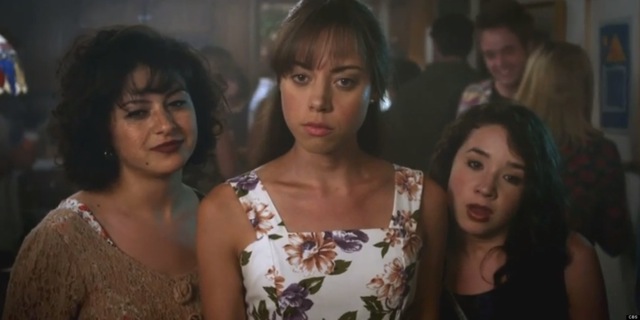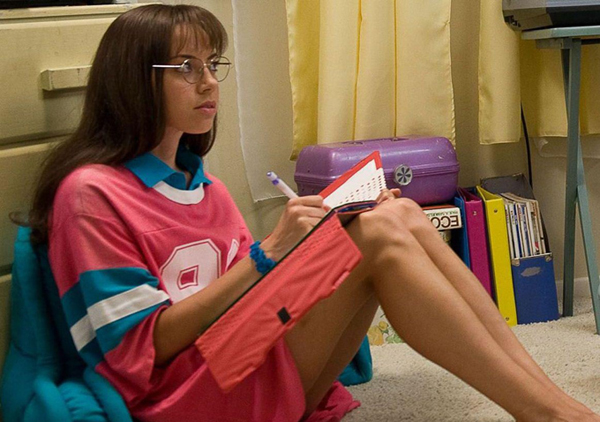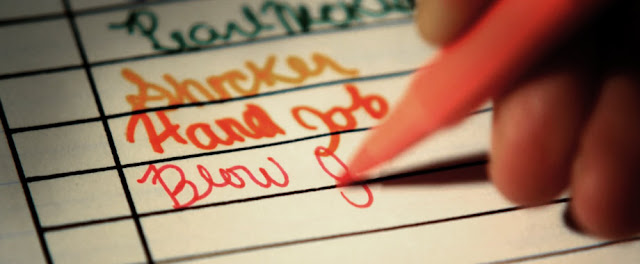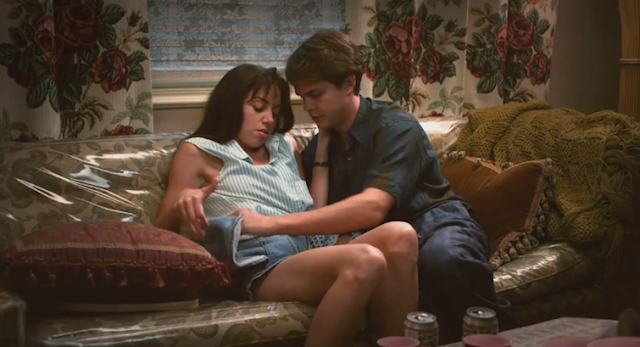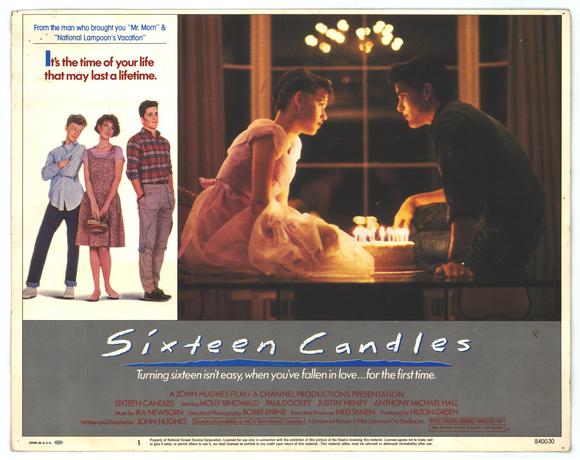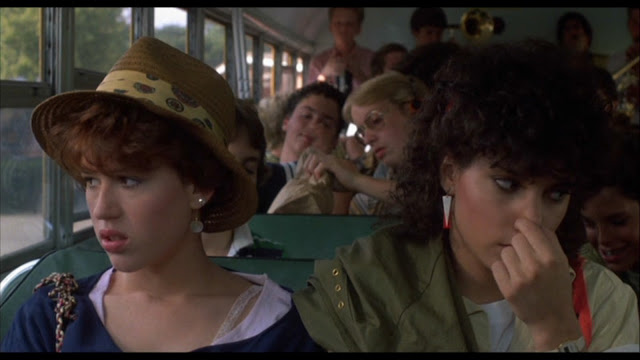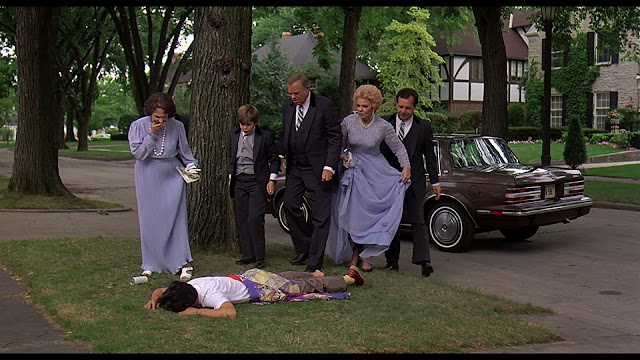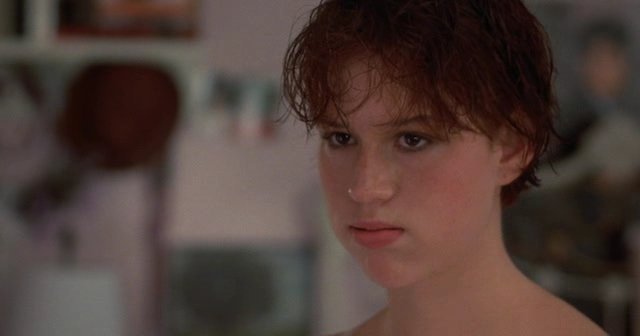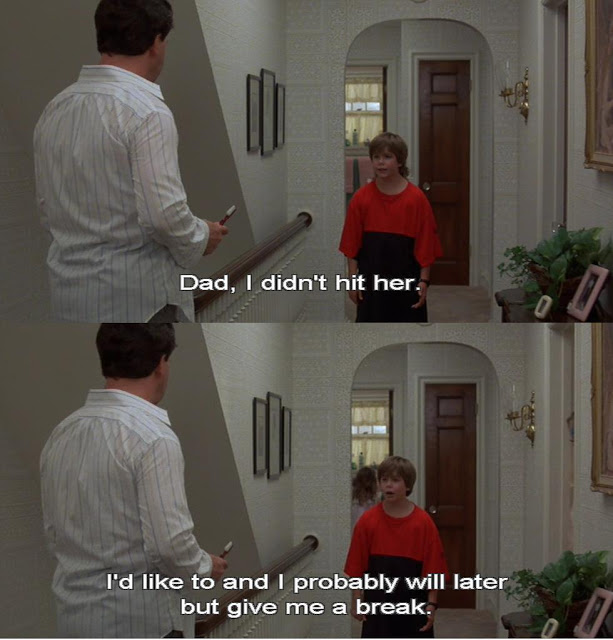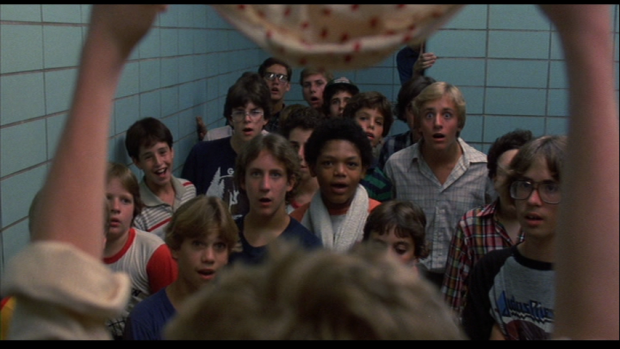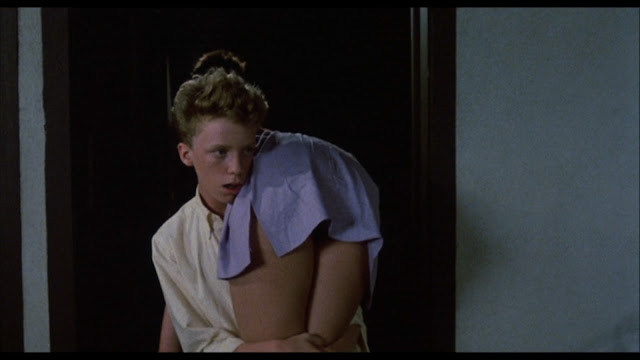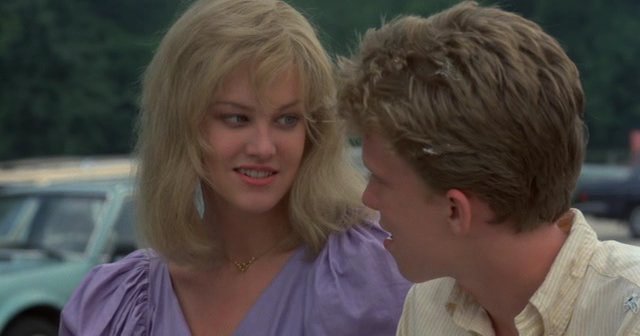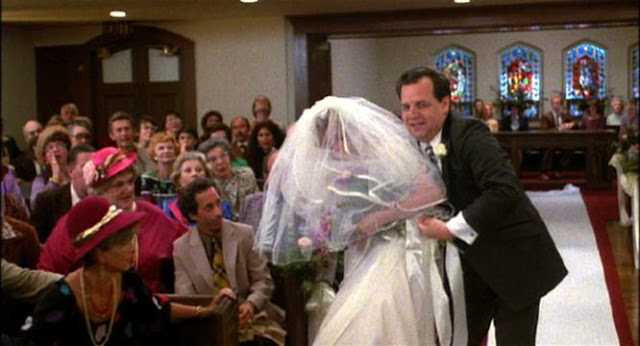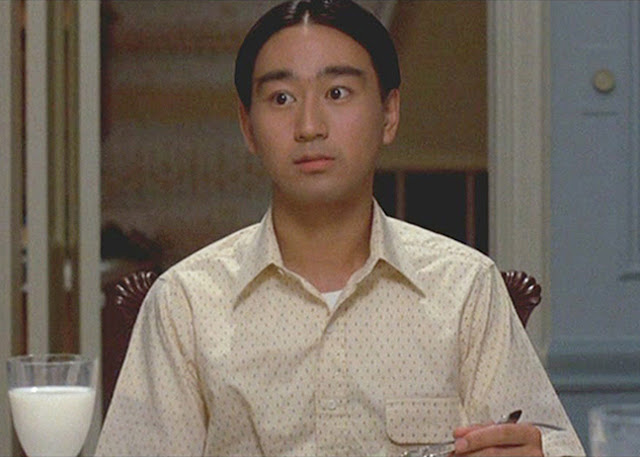
Written by Leigh Kolb as part of our theme week on Child and Teenage Girl Protagonists.
Recommended listening: “Dreams,” by The Cranberries; “Spin the Bottle,” by Juliana Hatfield; “Return to Innocence,” by Enigma; “Late At Night,” by Buffalo Tom; “Genetic,” by Sonic Youth; “Blister in the Sun,” by Violent Femmes; “Red,” by Frozen Embryos
Our teenage years are often unfulfilled and disappointing. We relentlessly try to find ourselves, to make things good, but those short years are over quickly, and we don’t truly get it until much later.
These years are much like the short-lived My So-Called Life, which aired from 1994 to early 1995, and was canceled after just one season. The protagonist of My So-Called Life, Angela Chase (Claire Danes), is a powerful representation of those short teenage years. She is self-centered, horny, and emotional. She is pulled from every direction, trying to separate from her parents and evolve with new friends. She has high expectations and deep disappointments. Angela and her friends are painfully accurate portrayals of what it is to be a teenager.
As sad and unjust as it is that the show only lasted one season, there’s something poignant about how it was short and open-ended, yet packed such intensity into 19 episodes. My So-Called Life is, essentially, a mirror image of adolescence not only in narrative, but also in format.

My So-Called Life is a gold mine for feminist analysis–the show includes many thoughtful critiques of what it means to be a young woman in our culture, what it means to be a wife and mother, what it means to be a man, and what it means to be gay. Topics typically reserved for superficial after-school specials (sexuality, drug use, abuse, coming out) are treated with an intensely real humanity that many critics have argued completely changed the genre of adolescent and family dramas.
Being a teenage girl in our culture is fraught with cultural expectations and disappointments. Angela–along with girlfriends Rayanne and Sharon–are portrayed not as caricatures, not as virgins or whores, not as good girls or bad girls. They are complex and sexual; they are selfish and confused; they are wonderful and awful.
Teenagers are typically–biologically–self-centered and sexual, and the power of nostalgia drives us to consider and reconsider our teen years (in them and after them). My So-Called Life stands the test of time because it deals with these issues through characters and plot lines that reflect reality.
Self-Centered
Early in the season, the writers frame most episodes with lessons that the students are learning in school. Kafka’s Metamorphosis is juxtaposed with Angela changing her looks (dying her hair red) and feeling misunderstood by her parents. Angela sits in a class about JFK’s assassination, and says she’s “jealous” that she hasn’t had that defining moment in life that she’ll always remember where she was when it happened. Malcolm X’s words are turned into a lament about a zit. Students flirt and make out, ignoring the art on a field trip to the art museum.
On the surface, these woven-together stories seem jarring–we watch Angela turn everything into an insignificant comparison to her own life. But this is exactly what we do in adolescence. We pout that nothing important has happened in our lifetime without understanding the weight of history because we think that we are the center of history. There is scientific proof that teenagers’ brains function differently–it’s important to remind ourselves of that.
My So-Called Life, specifically through Angela’s narrative, portrays that era of life perfectly. Creator/writer/producer Winnie Holzman said, “I just went back to what it was like to be a teenager for me. Sure, Angela’s me. But at the risk of sounding. . . whatever, all the characters were me.” Holzman researched further by teaching at a high school for a couple of days, and realized that teenagers were “exactly the same” as they always had been (which is perhaps why the show still seems so real).

This selfishness is not presented with judgment or disdain, though. All of the characters–teens and adults alike–have human motivations, which we sometimes like, and sometimes don’t. Their selfishness is examined through the consequences and normality of being self-centered as a teenager, and how that looks and feels different when one is a parent or teacher. Angela worrying about a zit over Malcolm X’s words seems off-putting, but it’s painfully real.
Angela’s relationships with her friends–Rayanne, Rickie, Brian, and Sharon–also highlight the inflated sense of self that navigates us through those formative years.
Horny
One of my favorite aspects of the show is the way young female sexuality is portrayed. Angela is horny as hell. Those fresh, out-of-control adolescent sexual urges are clear and accurate throughout the series, and the writers deal with teenage sexuality with truth and nuance that is too rare in portrayals of teenage sexuality (especially teenage girls’ sexuality). Angela’s inner monologues about–and eventual makeouts with–Jordan Catalano reveal that intensity.

Angela is clearly sexual, but also struggles with the disappointing reality of teenage male sexuality when Jordan tongue-attacks her with a terrible, awkward kiss, or expects sex before she’s ready. She wants him so much, but the expectations and imbalance of sexual power are crushing. Angela is never anti-sex, but she is nervous. She speaks with her doctor about protection, and opens up to Sharon. Her reasons for not being quite ready don’t have to do with her parents or religion–it’s about her. And that’s just how it should be.
Meanwhile, straight-laced Sharon is getting it on constantly. She shares with Angela that the expectations that disregard female agency are problematic, but she enthusiastically enjoys sex. While Sharon seems the most judgmental and prudish, she has a fulfilling and active sex life. Angela realizes–as do we–that sexual acts don’t define a person, but sexuality is an important part of who we are.
Rayanne is known by her peers as promiscuous and “slutty,” but we are also challenged to look beyond that. She wants to define herself, and that’s the label that has stuck–so she decides to be proud of the designation (she and Sharon share sub-plots about their sexual reputations). Her sexual experiences–the drunken night with Jordan being the only time we know she has sex–don’t seem to be healthy or for her. All of the characters needed more seasons to have their stories fully realized, but Rayanne especially needed more than 19 episodes to be explored.
My So-Called Life turns the virgin-whore dichotomy on its head. Young women’s sexuality–the intensity, the confusion, the expectations–is presented realistically, and the message that when it’s good, it’s good, is loud and clear.

Angela and Jordan’s makeout scenes are, well, amazing, and the female gaze is often catered to. When Angela is skipping geometry study sessions to go make out with Jordan in the boiler room, we understand why she’s doing it. That episode has some excellent commentary on young women’s educational motivations, especially mathematics. When an instructor laments that it’s “so sad” when these smart girls don’t try, another instructor says that it’s because of their low self-esteem.
While that’s not an untrue assessment, it’s also important to recognize that in Angela’s case, she was horny as hell. We brush off boys’ behavior–the idea that they can’t stop thinking about sex in their teen years–but girls are right there, too.
As Angela tells a confused Brian, “Boys don’t have the monopoly on thinking about it.”
My So-Called Life reiterates that idea, which is heartbreakingly rare in depictions of teenage girl protagonists.

Nostalgic
The Greek roots of the word nostalgia are to return (home) with pain. We often think of nostalgia as telling stories with old friends, or looking through old yearbooks as we reminisce. But it’s much more than that.
Angela says, “I mean, this whole thing with yearbook — it’s like, everybody’s in this big hurry to make this book, to supposedly remember what happened. Because if you made a book of what really happened, it’d be a really upsetting book.”
My So-Called Life ends with Angela stepping into a car with Jordan and driving away. Jordan has just met her mother, Patty, and the two sit and visit. Patty has been waiting for her old high-school love interest to stop by for a drink (and a business conversation), but he doesn’t show up. Patty and Jordan share a fairly intimate conversation, and both seem to understand something they hadn’t before.
Jordan comes outside, asks Angela to come along with him, and says that her mom says it’s OK. In understanding her own trajectory from teenager to adult, Patty has released Angela.
It’s sudden, it’s unclear, and it’s vague. It–the show, and adolescence–goes by so quickly, and we can’t fully understand it until we look back at the literal and figurative pictures of our life. Not just the smiling yearbook photos, but those things that remain inside.
We don’t know exactly where Angela is going at the end of My So-Called Life, and neither does she. The restraints and possibilities of adolescence can be overwhelming, and as life changes into adulthood, the restraints and possibilities both tighten and grow. By looking back–in all of its pleasure and pain–into those years of intense growth and confusion, we can better know ourselves.

When My So-Called Life originally aired, I was in middle school. Our antenna didn’t pick up ABC, so I wasn’t able to watch it in real time. I knew, however, from the occasional Sassy magazine that I wanted to be Angela Chase, and I wanted Jordan Catalano. Years later, after living through almost all of the plot lines of the show, I watched the entire series. And then again, years after that. I’m struck by how much I can still feel what I felt at 15 by listening to Angela’s internal monologue. Good television, like good literature, can do that–take us, through fiction, back to times and places. Whether those times and places are crushing or celebratory, there is a distinct pain in going back–that nostalgia that shapes us and creates our realities.

Almost 20 years later, we need more of what My So-Called Life gave us a taste of. We need teenage girl protagonists to be sexual, not sexy. We need honest portrayals of what it is to be a teenager–not only for teenagers who need to see themselves in faithful mirrors, but also for adults who are still trying to figure themselves out.
That season of our lives is fleeting, open-ended, and ends abruptly. It’s meaningful but unfortunate that My So-Called Life so accurately portrayed those particular aspects of adolescence.
Leigh Kolb is a composition, literature and journalism instructor at a community college in rural Missouri.

































